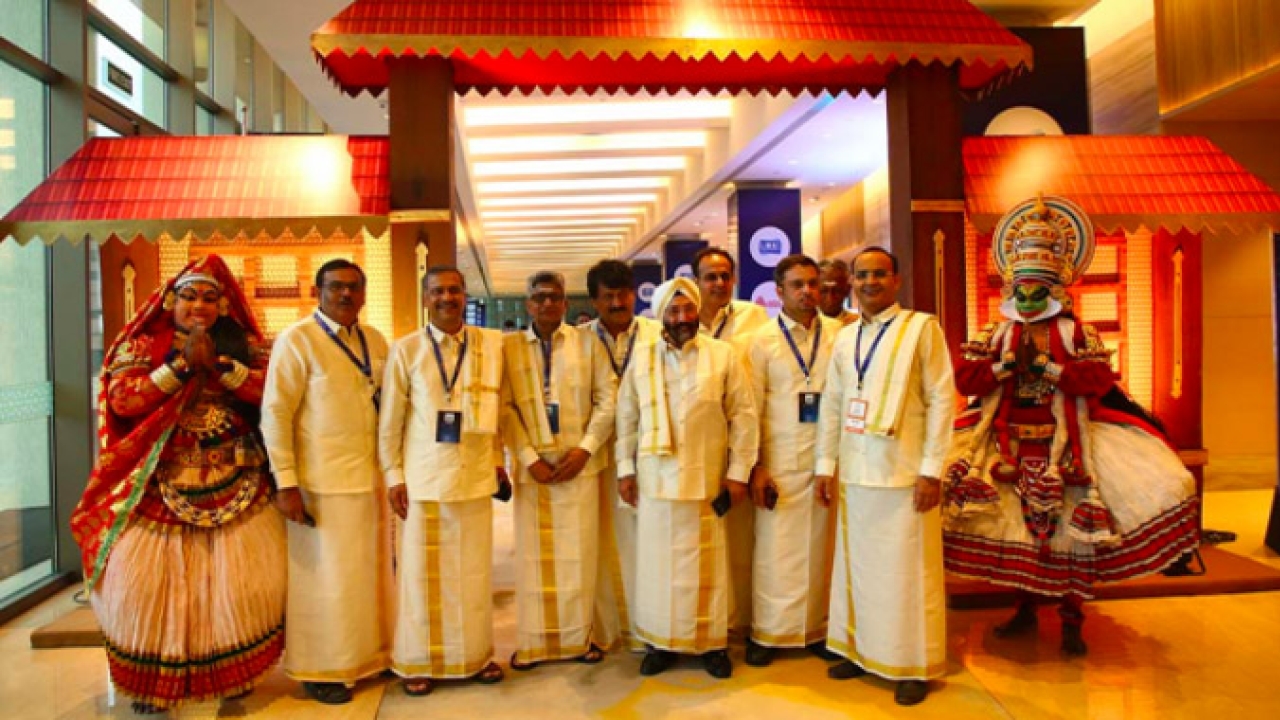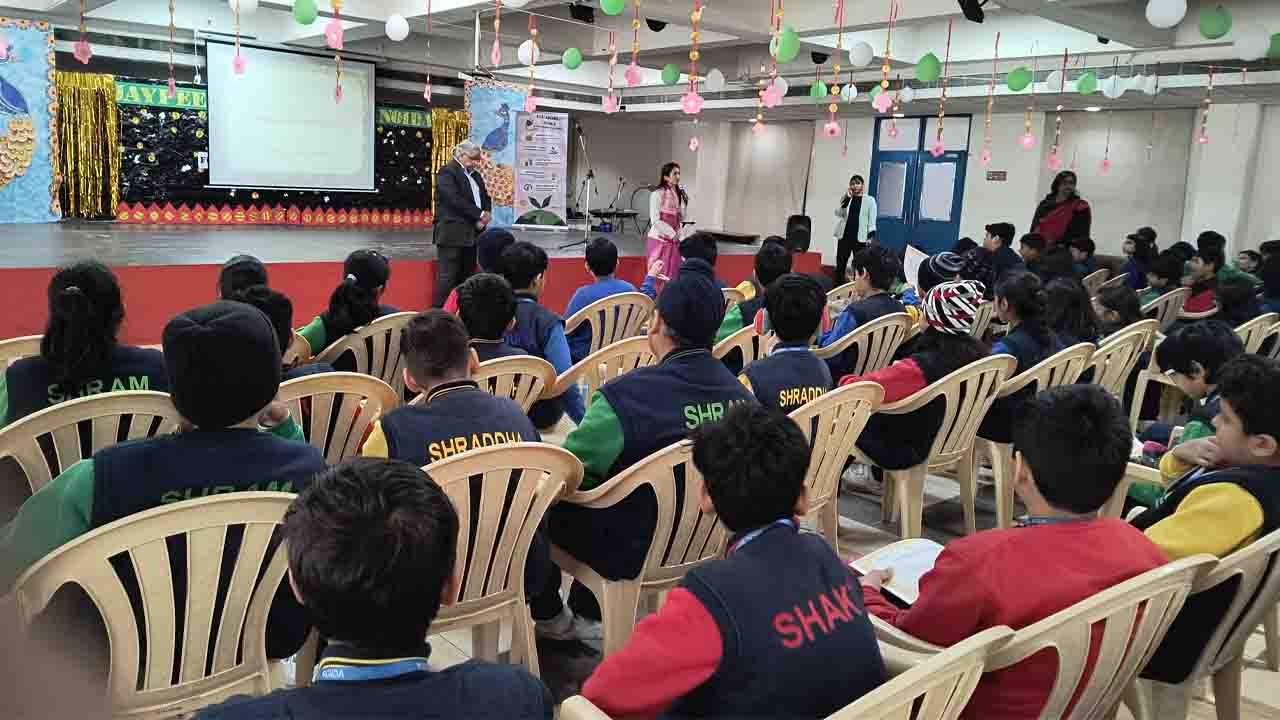LMAI hosts fifth conference

Giving an overview of the industry, Pankaj Bhardwaj, senior director and general manager, Labels and Graphic Materials, South Asia, Avery Dennison, said that the company sees 30 percent penetration of pressure-sensitive industry at the moment with per capita consumption of 0.5-0.6sqm in India. ‘We have significant room for growth but we need to make cumulative effort to grow the industry,’ he said. He stressed the importance of working with brand owners, embracing new technologies and building a business with purpose.
Detailing Indian label industry trends, Manoj KM, director business development and international business, Avery Dennison, said that consumer behavior will force packaging to change. ‘India will have one billion internet users in the next three years. Mobile phones will be the go-to-device for developing any market through digitization. It is, however, important to recognize that the Indian market will develop differently from the US and Europe.’
He further predicted that dialog on sustainability will get stronger and customers will voice their opinion. ‘Packaging trends such as connected packaging, closing the loop, reinventing the box and plastic-free will rule the roost. NFC, RFID and augmented reality will be more popular for more interactive and smarter packaging,’ said Manoj. Other trends on the horizon include personalization, premiumization and online marketing that will shape packaging shapes and formats.
‘Pressure-sensitive labels will continue to grow at 7 percent in the coming years and flexo will remain the dominant printing technology. Digital printing will be a significant contributor and water-based inkjet technology will show high growth,’ he said.
Parag Bagade, manager technical services, Avery Dennison, South Asia and Sub Sahara Africa, discussed key influences to sustainability and announced a matrix waste recycling program in India.
Ajay Mehta, managing director of SMI Coated Products, spoke about the technical aspects of labelstock applications and explained the importance of involving a labelstock manufacturer to avoid any challenges with the application.
Manish Jain, managing director of Loparex, pointed out that linerless thermal labelstock is an emerging disrupting technology and cited its benefits.
T R Ravishankar, management and strategic advisor, Retail Solutions and Technologies, said that according to the World Economic Forum, the Indian retail market is growing at a fast pace and will touch 1 trillion USD by 2020. ‘Grocery and food constitute 33 percent of the retail segment. The growth is not only in retail but also in digital payments, e-commerce, healthcare, government and manufacturing,’ he said. He also discussed trends in barcoding and enterprise mobility.
Carrie Duan, international sales manager at Luster Lighttech, said that more than 80 percent of printers use off-line inspection but in-line inspection is becoming more important to prevent waste and control quality during printing.
Press manufacturers and suppliers suggested that converters opt for the right press for their jobs and discussed current trends.
Wider widths
Ranesh Bajaj, director at Vinsak, said that the industry must start thinking of themselves as ‘solution providers’ rather than just label printers. He described how increasing numbers of converters are moving to wider web presses. ‘Those with 330mm width machines are already moving to 430mm and at least 20 percent of converters have already opted for 530 or 630mm width presses. The value of the flexible packaging sector is 450 billion USD in India and the label market stands at 11 billion USD. The future, therefore, is wide width and diversification into the flexible packaging segment,’ he said.
Echoing the same thoughts, Amit Ahuja, sales director of Multitec Aids, said: ‘We see an increase of stand-up pouches being printed on wider width presses.’
A Appadurai, country manager for HP Indigo, pointed out that small and mid-sized companies are scaling up and therefore converters should focus on catering to them as they increase their volumes and SKUs. Citing examples of the craft beer industry in the US, he said: ‘6,000 craft beer companies together have impacted 30 percent of the volume of Budweiser’s sales. We see this happening everywhere, across different industries.’
He further said that the life-cycle of products has become very short, down to six months, and that it is going to become even shorter. Converters, he said, must gear up to cater to millennials.
Discussing hybrid label printing, David Ellen, divisional director at Domino, explained that a hybrid press is suited to long run jobs. ‘It’s a much longer machine so waste is more comparable to a roll-to-roll digital press. All units have to be set-up which increases the make-ready time. Do your due diligence and let your book of business decide which digital asset suits your needs. Factors to consider before evaluating a hybrid machine include total production length, number of SKUs, finishing capabilities, need of embellishments and metallic inks, and capital budget. Printers must also have a clear understanding of what digital is going to do for their business and how will it increase their margins,’ he said.
Ian Pollock, director, UK and EAMER region, Mark Andy, spoke about the future of printing technology and summed up the requirements of converters. He said printers today want simple-to-operate presses with a shorter learning curve, advanced print quality, expanded capability with a wide variety of applications, flexibility to scale the equipment, faster changeovers, higher throughput for higher productivity, environmentally friendly processes to enable reduced waste of substrates and inks.
Samir Patkar, president of Heidelberg India, discussed challenges and opportunities. He said that 95 percent of printers outsource pre-press to a repro house, so most of them do not control the processes and quality in-house. ‘Sometimes, they lose a lot of time if the plates are not made correctly. Waste management remains an issue.’
He added: ‘Printers are trying to make a choice between conventional and digital processes. Anything you invest in should make money for you and get you return on investment.’
Manish Kapoor, national sales head for Nilpeter India, asked the audience about scale and scalability in the Indian label industry. ‘One of the challenges is new entrants willing to take a blind leap of faith. We must do a careful evaluation of how to run this competitive business. Smart printers have been acquired or consolidated but smarter ones have evolved to sustain healthy growth,’ he suggested. ‘The solution to any problem lies in first accepting that a problem exists. Converters need to do a critical analysis of their own businesses and find a way forward.’
The event also organized three panel sessions – one each with printers, suppliers and the young generation from family-run printing businesses (see boxouts).
The conference was supported by more than 30 companies including Avery Dennison, SMI Coated Products, Pulisi Technology, Domino Printech India, DuPont Advanced Printing, Heidelberg India, HP India, Vinsak India, Apex Asia Pacific, Bobst, Brotech Digital Graphics, Dragon Foils, Flexo Image Graphics, Flint Group India, GEW, Insight Print Communications, J N Arora, Loparex, Luster LightTech, Multitec Aids, Nilpeter India, Numex Blocks, Retail Solution & Technologies, Rogler International, RotoMetrics, Weigang, Acme Rolltech, Baldwin Vision Solutions, Cosmo Films, hubergroup, Lintec India, Martin Automatic, Monotech Systems and Repro Graphics.
Stay up to date
Subscribe to the free Label News newsletter and receive the latest content every week. We'll never share your email address.

